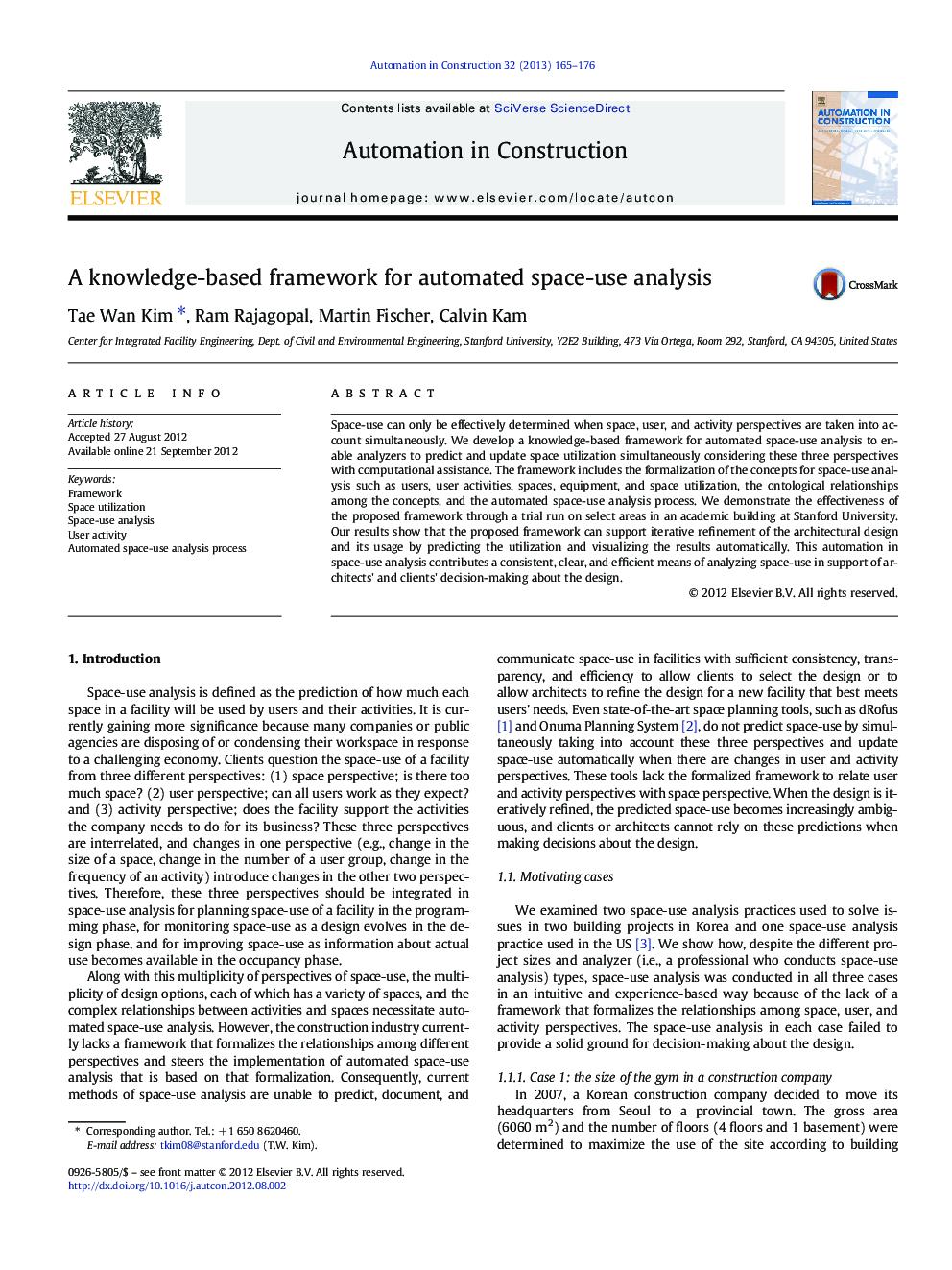| Article ID | Journal | Published Year | Pages | File Type |
|---|---|---|---|---|
| 246700 | Automation in Construction | 2013 | 12 Pages |
Space-use can only be effectively determined when space, user, and activity perspectives are taken into account simultaneously. We develop a knowledge-based framework for automated space-use analysis to enable analyzers to predict and update space utilization simultaneously considering these three perspectives with computational assistance. The framework includes the formalization of the concepts for space-use analysis such as users, user activities, spaces, equipment, and space utilization, the ontological relationships among the concepts, and the automated space-use analysis process. We demonstrate the effectiveness of the proposed framework through a trial run on select areas in an academic building at Stanford University. Our results show that the proposed framework can support iterative refinement of the architectural design and its usage by predicting the utilization and visualizing the results automatically. This automation in space-use analysis contributes a consistent, clear, and efficient means of analyzing space-use in support of architects' and clients' decision-making about the design.
► We formalize seven concepts for space-use analysis and their relationships. ► We defined four functions of the automated space-use analysis process. ► User activities are automatically mapped onto spaces in our framework. ► Visualization methods such as the activity–space mapping diagram are suggested. ► Consistency, transparency, and efficiency of space-use analysis are improved.
